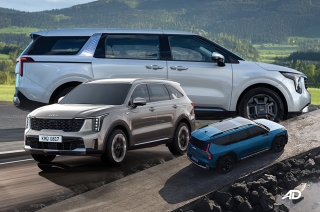
There are split theories whether you still have to break in your car or not. One group says that yes, it’s a must, and some goes against this idea. The latter group said that technology has gone a long way so running-in your new car can already be crossed out on the to-do list, and might as well have a drive-it-like-you-stole-it kind of mindset. So, which one will you follow?
The safe answer here is to ask for an advice from the manufacturer. While some car makers that produce high performance cars like Ferrari and Lamborghini already had vehicles broken-in at the factory, other companies still recommend to break-in the vehicle to avoid any defects that could potentially occur. These companies even give guidelines or manual for the car owners to follow. To give you tips about the know-how of breaking in your vehicle, we at AutoDeal got your back.

Break-in to avoid break-out
Before anything else, what does “break-in” mean? It’s actually a period of time in which you have to treat your newly acquired car with utmost care and follow certain instructions while driving it. It’s a procedure to test if various components such as engine piston rings and cylinder walls are functioning properly together, as the car reaches its greatest level of performance. Now, let’s start the real deal.
Tip no. 1: Don’t drive in extreme speed.
Make sure to keep the revs under the 3,000 rpm mark. Never floor the accelerator pedal and just keep the engine speed around 30 mph to 50 mph in intervals of five minutes. To be on the better side, it's best to follow the car manufacturer's instructions for accurate details.

Tip no. 2: Overloading your vehicle is a no-no.
The goal is not to stress out the engine, so overloading your vehicle is one of the last things you should do. More load means more weight, which then translates to more power needed to produce. When you load unnecessary things in your vehicle, it also affects your brakes, tires, transmission, and suspension. These things contribute to the overall break-in process.
Tip no.3 : Take your car in a long drive.
During the break-in period, you should allow your engine to continue running until it gets up to the standard operating temperature before shutting it down. Short distance travels usually don’t allow this to happen. Long distance travel lets you examine if the mechanical components of your new four-wheeled buddy are working properly, and if the fluids are circulating well all throughout.

Tip no.4: Don’t forget to change your oil.
Changing oil is a way to get the metal fillings or dust out of the car’s engine. Car owners are usually advised to have their first oil change after 50 to 100 miles, and then after the break-in period ends. This part of the process is important as it will prevent long-term damage that may happen in the future.
Tip no. 5: Never use cruise control.
The purpose of cruise control is to keep your vehicle at the constant speed. In the case of break-in, this feature is useless, as you have to vary the engine speed and vehicle speed (but keep in mind our Tip no.1) to make sure that the gears are operating just fine.
Remember: Please read the owner’s manual for more precise details and instructions. Don’t think twice breaking in your car, unless advised by the manufacturer that you don’t have to. After all, you have nothing to lose here. As the saying goes, an ounce prevention is worth a pound of cure.
Latest Features
-
An all-electric future: The Porsche Macan Electric / Featured Article
Porsche’s Macan goes all-electric; it’s a new beast with an electrified heart, yet unmistakably Porsche in performance and spirit.
-
Which Kia should I buy? / Featured Article
We’re here to help you decide which Kia vehicle is best for you, whether it’s a sedan, crossover, or minivan.
-
Why Lynk & Co is a good option for luxury car buyers / Featured Article
Lynk & Co offers premium value for those exploring the luxury market.
Popular Articles
-
Electric Vehicles in the Philippines for under P1 million
Jerome Tresvalles · Aug 19, 2025
-
Top 3 Cars For Every Lifestyle—What Cars Are Right For You? | Behind a Desk
Caco Tirona · Apr 24, 2024
-
5 Tips to Maximize Fuel Efficiency
Jerome Tresvalles · Sep 09, 2024
-
Five driving habits that are draining your fuel tank
Jerome Tresvalles · Jun 24, 2025
-
Can engine braking harm your engine?
Jerome Tresvalles · Sep 11, 2025
-
Do electric cars even need maintenance?
Jerome Tresvalles · Oct 23, 2024
-
Best vehicles for an active outdoor lifestyle
Shaynah Miranda · Jul 25, 2024
-
How to drive different types of vehicle transmissions
May 23, 2024
-
5 easy ways to keep your car interior clean
Allysa Mae Zulueta · Nov 15, 2021
-
How to survive Metro Manila traffic
Earl Lee · Aug 16, 2022




